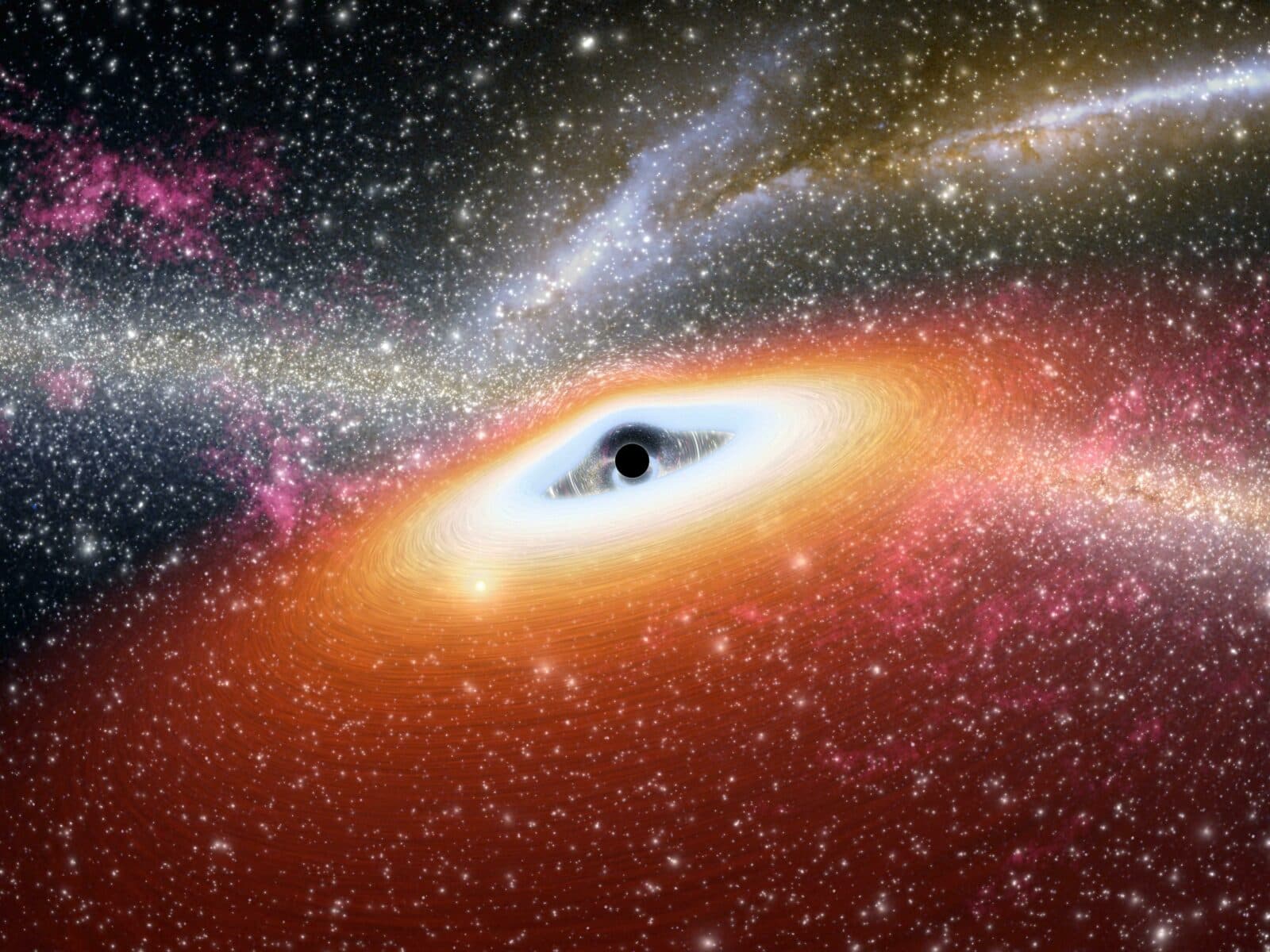Spotlight Live: Black Holes & Our Cosmic Evolution
by Bruce Lieberman
Three leading scientists answer your questions about supermassive black holes.

The Author
The Researchers
NOTE: Thanks to everyone who joined our discussion. YOUR QUESTIONS are listed below with time stamps for hearing the answers.
BLACK HOLES ARE MYSTERIOUS PHENOMENA that arise from dead stars and exert a gravitational pull so strong not even light can escape. But they are much more than cosmic curiosities. The largest black holes lie at the center of galaxies and galaxy clusters, influencing their evolution over cosmic time. How the first black holes formed, how they grew, and how they continue to shape the cosmos are questions that theorists and observational cosmologists have yet to answer.
On Sept. 11, three leading scientists – Roger Blandford (Kavli Institute for Particle Astrophysics and Cosmology at Stanford University and SLAC) , Priyamvada Natarajan (Yale University), John Wise (Georgia Institute of Technology) – answered your questions about supermassive black holes, their role in shaping galaxies and clusters of galaxies, and the biggest questions keeping them and other astrophysicists busy.

About the Participants (left to right)
- ROGER BLANDFORD – Luke Blossom Professor in the School of Humanities and Sciences, Stanford University, Professor of Physics at Stanford University and at SLAC National Accelerator Laboratory, and Faculty Member and Former Director of the Kavli Institute for Particle Astrophysics and Cosmology (KIPAC). Dr. Blandford’s research interests include cosmology, black hole astrophysics, gravitational lensing, galaxies, cosmic rays, neutron stars, and white dwarfs. He also led the National Research Council's Astronomy and Astrophysics Decadal survey – Astro2010.
- PRIYAMVADA NATARAJAN – Professor in the Departments of Astronomy and Physics at Yale University. Dr. Natarajan is a theoretical astrophysicist interested in cosmology, gravitational lensing and black hole physics. She is actively engaged in understanding the mass assembly history of black holes over cosmic time.
- JOHN WISE – Assistant Professor at the Center for Relativistic Astrophysics at the Georgia Institute of Technology in Atlanta, Georgia; Dr. Wise’s research interests include star and galaxy formation in the distant early universe, and the relationship between early black holes and early galaxies. He uses massively-parallel computer simulations to explore problems in these topics.
- BRUCE LIEBERMAN – Freelance science writer and moderator. Bruce has more than 20 years of experience in the news business. He worked as a reporter at daily newspapers for many years before becoming an independent writer and editor in 2010. For The Kavli Foundation, he has interviewed researchers about numerous topics in astronomy & astrophysics, neuroscience and nanotechnology. He has also written for Scientific American, Smithsonian Air & Space and Sky & Telescope magazines, and other media outlets about a variety of science topics.
Your Questions
- How did supermassive black holes come into existence? (3:15)
- What are black holes, and how could they have formed from a direct collapse of gas? (6:10)
- How do massive black holes influence the universe? (10:10)
- How hot or cold is it inside a black hole? (13:00)
- What is the best guess for the state of matter in a black hole? (14:15)
- Can we accurately predict what stars will become black holes? (17:10)
- When black holes collide, how do they merge? (18:48)
- How do black holes effect the geometry of the universe? (21:10)
- What is the role of dark matter in the formation of supermassive black holes? (23:30)
- What interesting experiments would you like to see regarding black holes? (25:25)